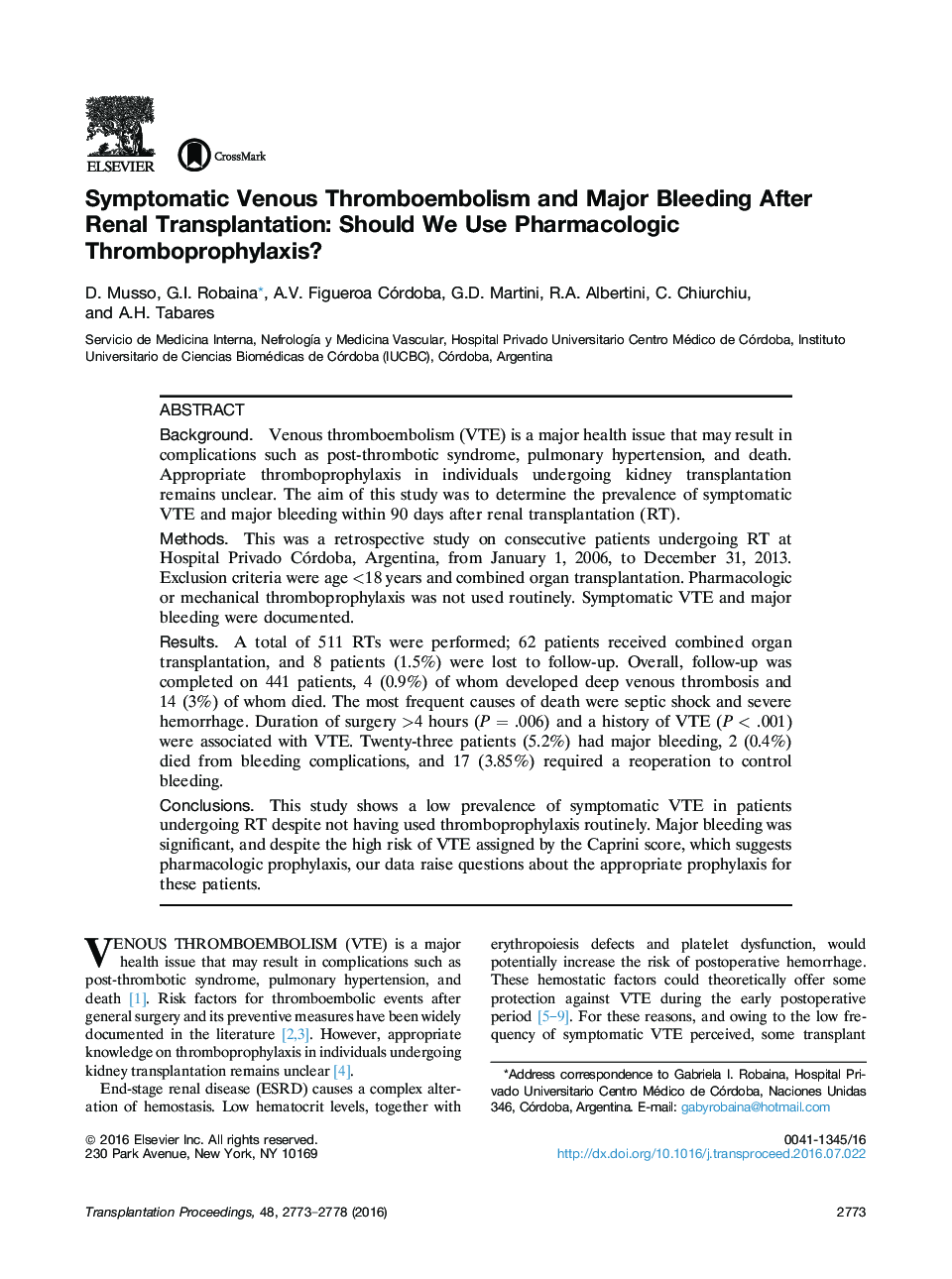| کد مقاله | کد نشریه | سال انتشار | مقاله انگلیسی | نسخه تمام متن |
|---|---|---|---|---|
| 5729221 | 1411677 | 2016 | 6 صفحه PDF | دانلود رایگان |
- Thromboprophylaxis in individuals undergoing kidney transplantation remains unclear.
- Four patients (0.9%) developed deep venous thrombosis.
- Twenty-three patients (5.2%) had major bleeding.
- Low prevalence of symptomatic venous thromboembolism.
BackgroundVenous thromboembolism (VTE) is a major health issue that may result in complications such as post-thrombotic syndrome, pulmonary hypertension, and death. Appropriate thromboprophylaxis in individuals undergoing kidney transplantation remains unclear. The aim of this study was to determine the prevalence of symptomatic VTE and major bleeding within 90 days after renal transplantation (RT).MethodsThis was a retrospective study on consecutive patients undergoing RT at Hospital Privado Córdoba, Argentina, from January 1, 2006, to December 31, 2013. Exclusion criteria were age <18 years and combined organ transplantation. Pharmacologic or mechanical thromboprophylaxis was not used routinely. Symptomatic VTE and major bleeding were documented.ResultsA total of 511 RTs were performed; 62 patients received combined organ transplantation, and 8 patients (1.5%) were lost to follow-up. Overall, follow-up was completed on 441 patients, 4 (0.9%) of whom developed deep venous thrombosis and 14 (3%) of whom died. The most frequent causes of death were septic shock and severe hemorrhage. Duration of surgery >4 hours (P = .006) and a history of VTE (P < .001) were associated with VTE. Twenty-three patients (5.2%) had major bleeding, 2 (0.4%) died from bleeding complications, and 17 (3.85%) required a reoperation to control bleeding.ConclusionsThis study shows a low prevalence of symptomatic VTE in patients undergoing RT despite not having used thromboprophylaxis routinely. Major bleeding was significant, and despite the high risk of VTE assigned by the Caprini score, which suggests pharmacologic prophylaxis, our data raise questions about the appropriate prophylaxis for these patients.
Journal: Transplantation Proceedings - Volume 48, Issue 8, October 2016, Pages 2773-2778
